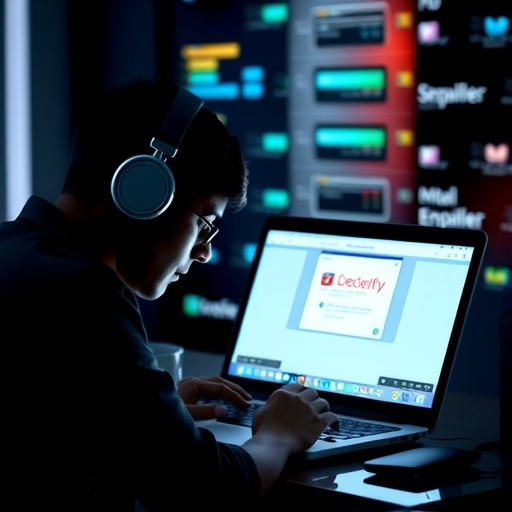In today’s hyperconnected work environments, the barrage of simultaneous demands on attention is relentless. Imagine being on a critical video conference, while your Slack notifications flare up, multiple complex spreadsheets remain open on your multiple monitors, and your email inbox pings with new messages. Amid this chaos, subtle indicators of cyber threats—like phishing attempts—often go unnoticed. This divided focus presents fertile ground for malicious actors, who dispatch an estimated 3.4 billion harmful emails daily, aiming to exploit these attention lapses. A groundbreaking study from Binghamton University’s School of Management sheds light on how multitasking severely undermines our ability to detect phishing attacks and proposes practical, timely interventions to counteract this vulnerability.
Phishing, a sophisticated form of social engineering, depends heavily on manipulating human attention and trust. The new research reveals that the cognitive overload stemming from multitasking significantly impairs working memory capacity, thereby diminishing the detection accuracy for phishing cues. Working memory, the mental workspace where information is temporarily held and processed, is finite. When overloaded with concurrent tasks, less capacity remains to scrutinize email for deception indicators. This critical insight is informed by experiments involving 977 participants who performed realistic multitasking scenarios—juggling memorization tasks alongside the critical secondary task of identifying phishing attempts—revealing a pronounced drop in detection rates under high cognitive load.
The study, led by SOM Associate Professor Jinglu Jiang and collaborators across several institutions, emphasizes the differential impact of multitasking on phishing detection. Under heavy working memory strain, the researchers report a steep decline in the ability to identify subtle suspicious elements in email communications. This vulnerability underscores the heightened risks faced by modern knowledge workers who routinely shift attention between urgent tasks, making cybersecurity defenses reliant on human vigilance particularly fragile. The challenge is exacerbated by the increasing sophistication of phishing techniques, which often employ spoofed sender identities and realistic narratives designed to bypass heuristic defenses.
However, one of the most compelling aspects of this research is its identification of an effective, low-cost intervention to bolster phishing detection—lightweight, timely nudges designed to activate goal-oriented attention. These nudges, implemented as brief, non-intrusive reminders or warning banners within email interfaces, serve to momentarily redirect cognitive resources toward scrutinizing potentially deceptive content. Far from requiring sweeping changes to workflow or user behavior, these context-aware prompts reinforce vigilance exactly at moments of peak vulnerability, thus enhancing overall security outcomes.
The experimental framework carefully measured the effects of these notifications within multitasking environments, demonstrating that even brief reminders significantly improve detection accuracy. Participants who received prompts about possible fraudulent content could reallocate cognitive resources to evaluate suspicious messages more thoroughly. Crucially, these interventions worked effectively without imposing additional cognitive load or workflow disruption, suggesting a scalable solution for organizational cybersecurity defenses.
Moreover, the research dives deeper into the psychology of message framing and motivation. Phishing messages framed as potential gains—offering incentives like “claim your gift card now” —respond favorably to goal activation nudges, which can amplify attention and detection rates. Conversely, loss-framed messages warning of imminent penalties—“your account will be locked in 24 hours,” for instance—naturally trigger heightened vigilance, rendering additional reminders less beneficial. This nuanced understanding allows for strategic deployment of notifications, optimizing employee attention without overwhelming them with unnecessary alerts which could lead to alert fatigue.
The study’s findings advocate for adaptive cybersecurity education and tools that reflect real-world multitasking scenarios, moving beyond traditional training models that assume users operate in focused, distraction-free environments. By embedding context-aware nudges across common digital platforms—such as Outlook, Slack, and Microsoft Teams—organizations can create layered defenses that operate seamlessly within employees’ workflows, thus improving phishing resilience in a pragmatic manner.
Notably, the authors highlight the evolving nature of phishing threats, with attackers continuously refining their techniques to circumvent detection, including the use of sophisticated fake accounts and obfuscation strategies that conceal sender identity. This dynamic threat landscape necessitates equally dynamic, responsive countermeasures grounded in cognitive science and human factors. The integration of just-in-time reminders reflects a promising avenue where technological and behavioral insights converge to fortify defenses without imposing additional burdens on workers.
The implications of this study extend far beyond IT departments. For cybersecurity professionals, it provides an evidence-based framework for designing more effective phishing prevention programs that acknowledge human limitations under multitasking. For business leaders, it underscores the critical need to balance security protocols with the realities of today’s work culture—where multitasking is the norm rather than the exception. By leveraging subtle, context-sensitive cues, organizations can foster a culture of vigilance without adding friction to everyday operations.
In conclusion, as phishing threats continue to escalate in volume and sophistication, this research offers actionable insights for enhancing human detection capabilities amidst the noisy, multitasking modern workplace. By implementing intelligent, content-aware nudges that align with users’ cognitive states and the framing of phishing messages, organizations stand a better chance at intercepting attacks before they compromise sensitive data or systems. The fusion of psychological understanding and technological implementation marks a new frontier in cybersecurity strategy—one that empowers employees to be the active defenders in the ongoing battle against digital deception.
Subject of Research:
Article Title: Phishing detection in multitasking contexts: the impact of working memory load, goal activation, and message framing cue on detection performance
News Publication Date: 3-Sep-2025
Web References: http://dx.doi.org/10.1080/0960085X.2025.2548543
Keywords: Information technology, Information science, Applied sciences and engineering, Business, Project management, Computer science, Cybersecurity




